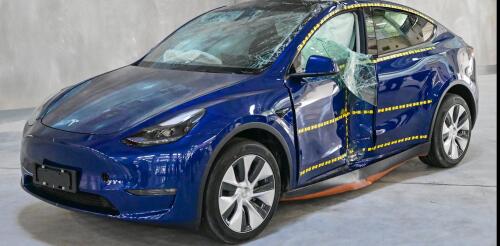Cars
Since the 1940s, there has been a broad shift away from public transit across the U.S., and service has declined in many cities, including New York, Boston, Denver, Orlando and St. Louis. A look back at the last national mass transit boom helps explain the challenges that confront modern transit agencies. Starting in the 19th century, transit companies worked closely with real estate developers to develop “streetcar suburbs” for a growing population. The companies kept fares low, thanks to corporate consolidation, government regulation and thrifty management. During World War II, producing weapons and supplies for troops fighting abroad became the nation’s top priority. Gasoline, tires and autos were strictly rationed, so most commuters had few ways to get to work other than public transit. In Baltimore, for example, people could ride a streetcar anywhere in the city in 1943 for 10 cents. With wartime production booming, the city’s Baltimore Transit C...
With the Olympic torch extinguished in Paris, all eyes are turning to Los Angeles for the 2028 Olympics. The host city has promised that the next Summer Games will be “car-free.” For people who know Los Angeles, this seems overly optimistic. The car remains king in LA, despite growing public transit options. When LA hosted the Games in 1932, it had an extensive public transportation system, with buses and an extensive network of electric streetcars. Today, the trolleys are long gone; riders say city buses don’t come on schedule, and bus stops are dirty. What happened? This question fascinates me because I am a business professor who studies why society abandons and then sometimes returns to certain technologies, such as vinyl records, landline phones and metal coins. The demise of electric streetcars in Los Angeles and attempts to bring them back today vividly demonstrate the costs and challenges of such revivals. The 2028 Olympi...
“Can you name the truck with four-wheel drive, smells like a steak, and seats 35?” Back in 1998, “The Simpsons” joked about the Canyonero, an SUV so big that they were obviously kidding. At that time, it was preposterous to think anyone would drive something that was “12 yards long, two lanes wide, 65 tons of American Pride.” In 2024, that joke isn’t far from reality. And our reality is one where more pedestrians and bicyclists are getting killed on U.S. streets than at any time in the past 45 years – over 1,000 bicyclists and 7,500 pedestrians in 2022 alone. Vehicle size is a big part of this problem. A recent paper by urban economist Justin Tyndall found that increasing the front-end height of a vehicle by roughly 4 inches (10 centimeters) increases the chance of a pedestrian fatality by 22%. The risk increases by 31% for female pedestrians or those over 65 years, and by 81% for children. It’s hard to argue with physics...
The future of automobiles is electric, but many people worry about the safety of today’s electric vehicles. Public opinion about EV crash safety often hinges on a few high-profile fire incidents. Those safety concerns are arguably misplaced, and the actual safety of EVs is more nuanced. I’ve researched vehicle safety for more than two decades, focusing on the biomechanics of impact injuries in motor vehicle crashes. Here’s my take on how well the current crop of EVs protects people: The burning question EVs and internal combustion vehicles undergo the same crash-testing procedures to evaluate their crashworthiness and occupant protection. These tests are conducted by the National Highway Safety Administration’s New Car Assessment Program and the Insurance Institute for Highway Safety. These analyses use crash test dummies representing midsize male and small female occupants to evaluate the risk of injuries. The tests can evaluate fire hazard either ca...
Curious Kids is a series for children of all ages. If you have a question you’d like an expert to answer, send it to curiouskidsus@theconversation.com. Why aren’t there solar-powered cars? – Emma, age 16, Springville, Utah Solar cars exist. The best place to see them is the World Solar Challenge, a race that’s held every two years in Australia. Competitors have to drive about 1,870 miles (3,000 kilometers), from Darwin on the country’s north coast to Adelaide on its south coast, using only energy from the Sun. Many cars that compete in this race look more like amusement park rides or science fiction vehicles than the cars you see on the road. That tells you something about why solar cars aren’t an option for everyday travel, at least not yet. Collecting enough sunlight While a lot of sunlight falls on Earth during the day, the light becomes scattered as...



